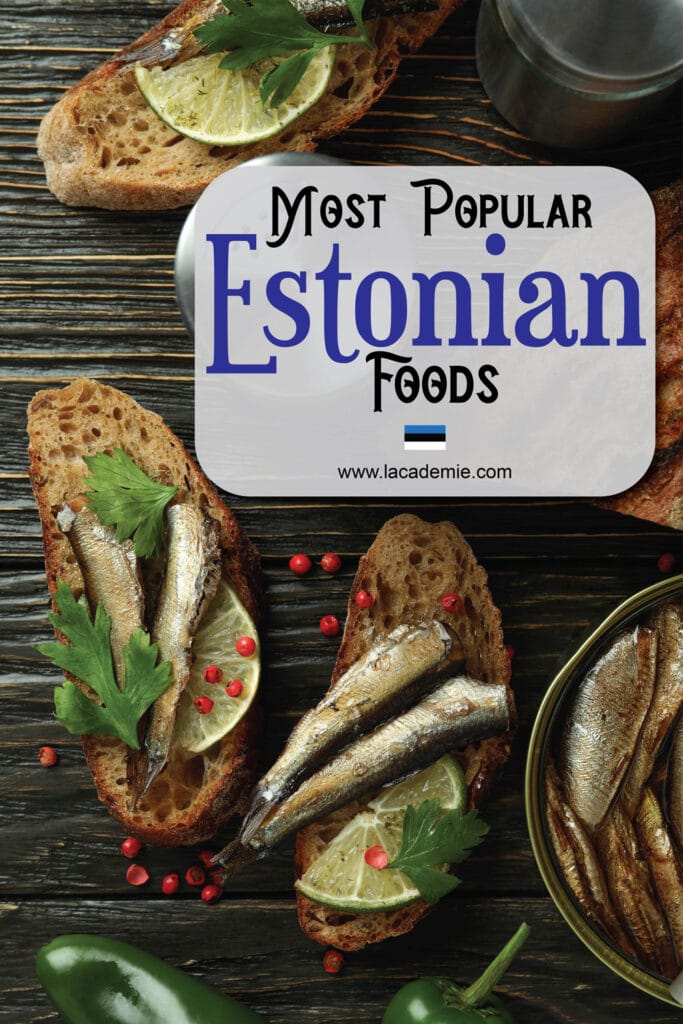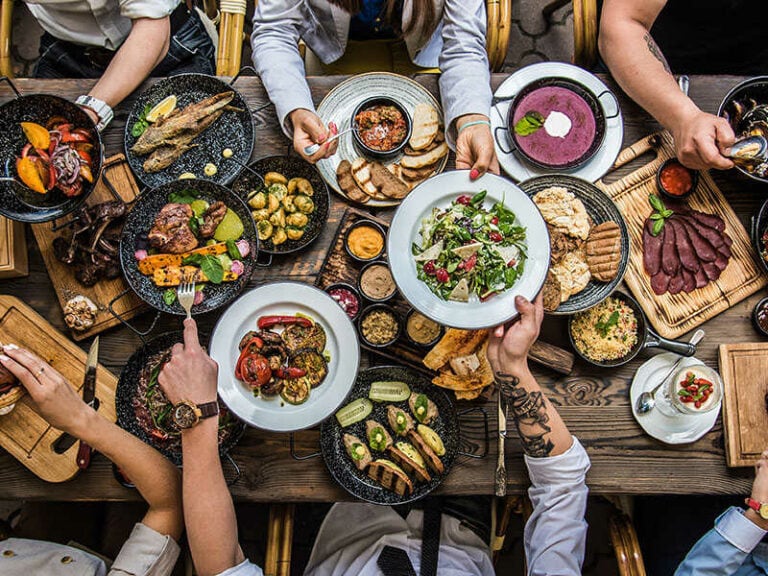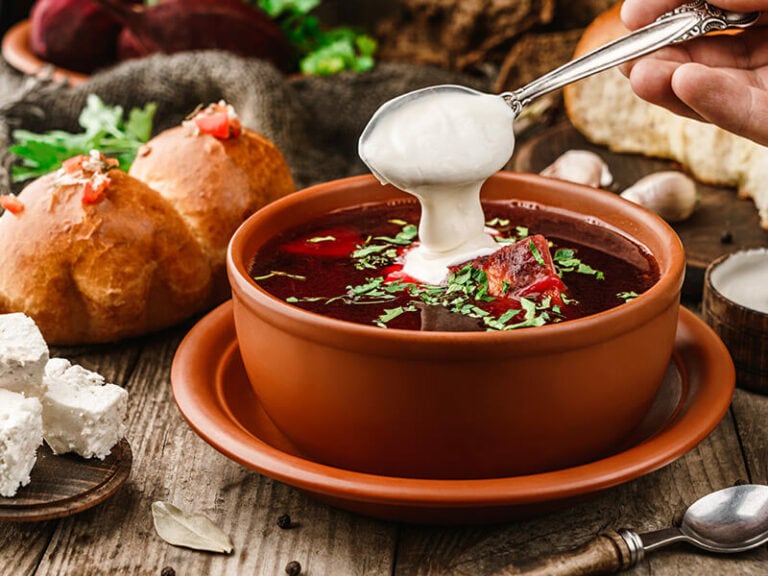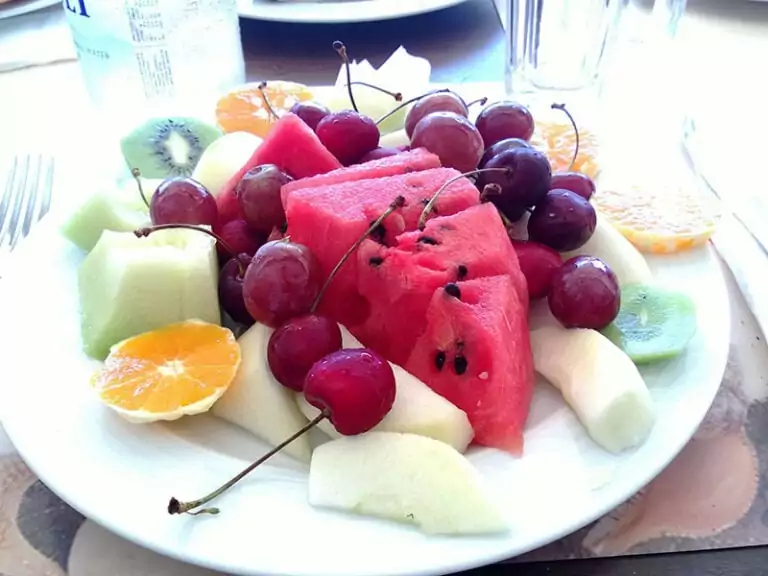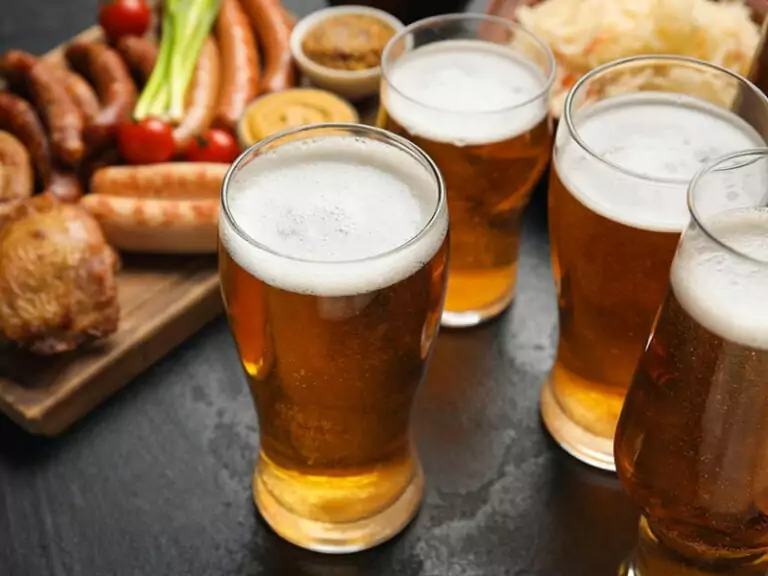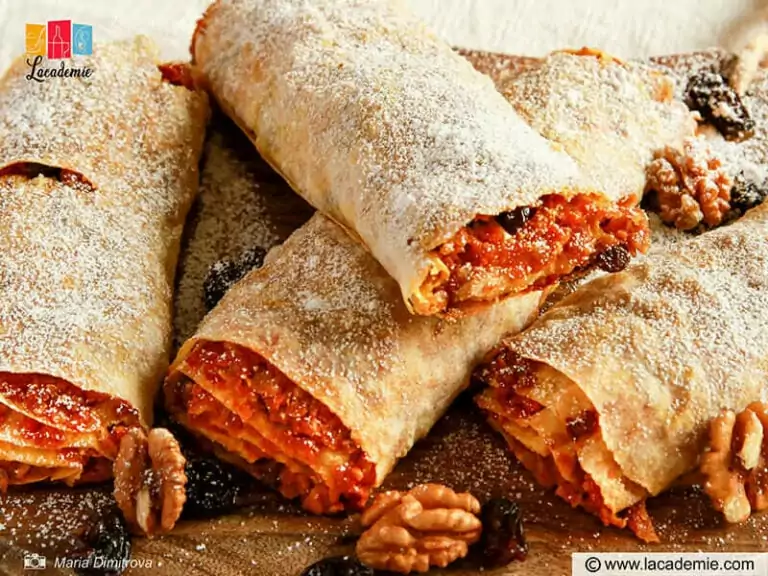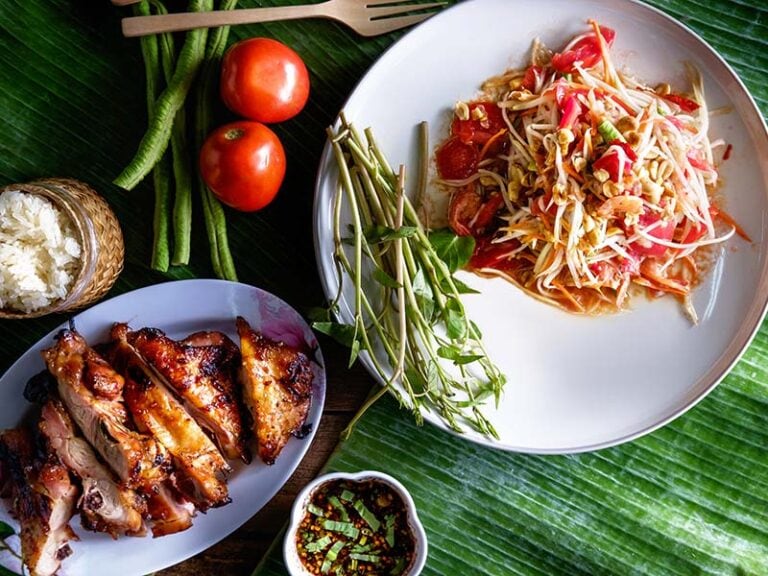If you don’t try out these incredible Estonian foods, what’s the point of traveling to this country? From substantial staples, flavorful meat dishes, and delightful sweet snacks and desserts, this country never runs out of food options for you to explore.
Although you might not consider yourself a foodie, knowing about a country’s main cuisine is an excellent way to learn about its history and culture. So make a mental note of the meals I listed below and enjoy the cuisine of this beautiful country like a local.
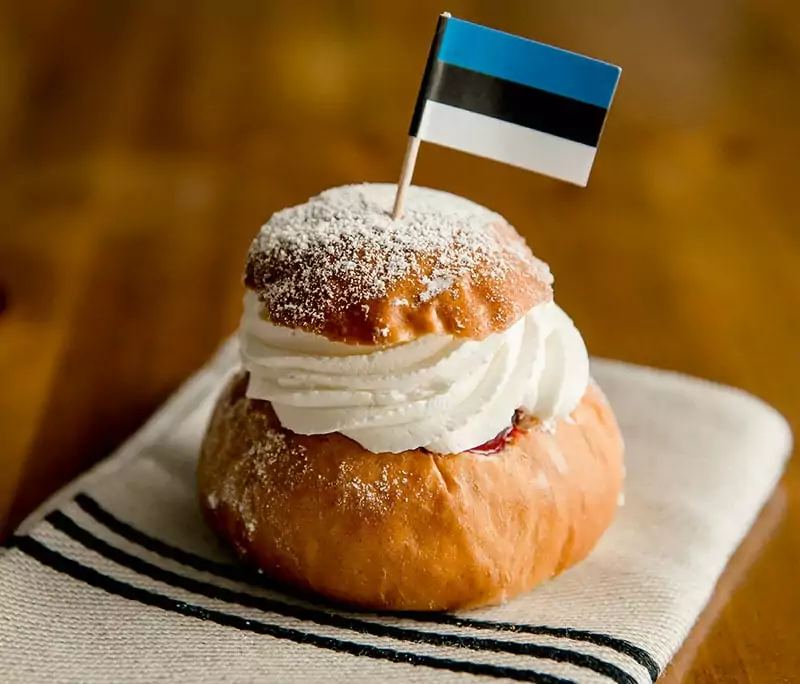
1. European Sprat
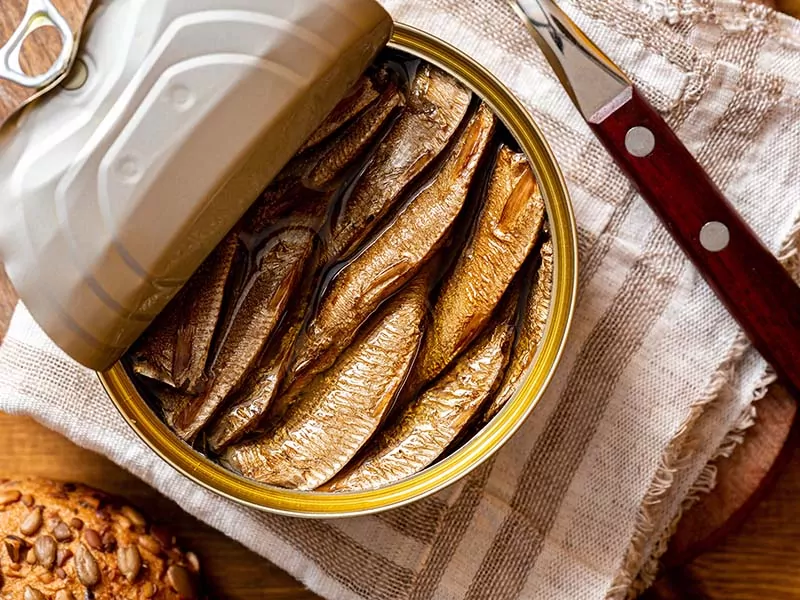
Estonia, like any other seaside nation, has always valued fishing. Fish has always been and continues to be an essential element of Estonian cuisine. Flounder, pike, bream, or smelt, you name it! But the fish that I’m focusing on today is European sprat.
The European sprat is a small marine fish in the Clupeidae family. It has white-gray flesh, commonly found in European seas. And, of course, countless Estonian dishes include this tasty fish.
It has manifold ways for consumption, including canned, salted, fried, or smoked. Plus, sprat is also widely used in industrial feeds, where it is converted into fishmeal.
2. Kiluvõileib – Sprat Sandwich
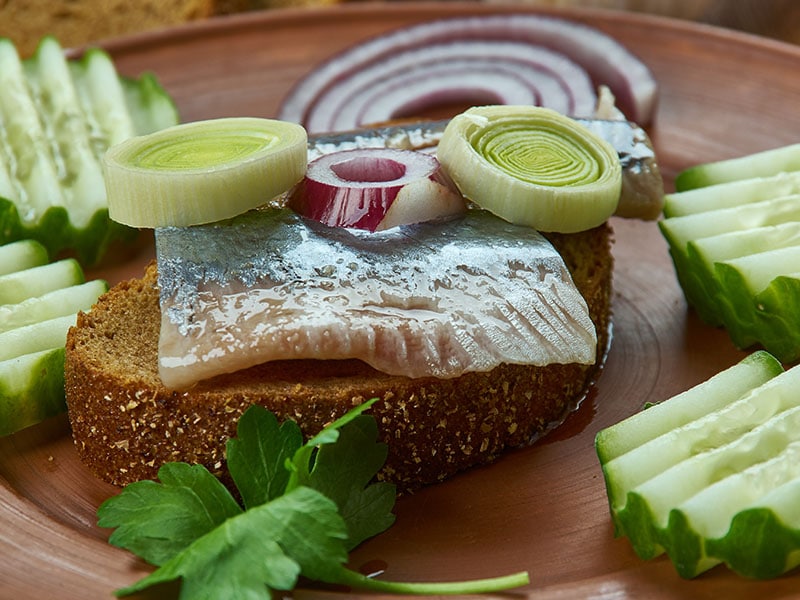
As I mentioned earlier, there are many dishes in Estonia that contain sprat, the most popular one being Kiluvõileib.
Kiluvõileib is a classic open-faced sandwich with a marinated sprat filet on a slice of rye bread. The filets are occasionally accompanied by poached or hard-boiled eggs, green onions, and fresh herbs.
This traditional sandwich contains a rice source of protein from the egg and omega-3 from the sprat, providing your body with some essential nutrients. You can easily find this dish in most local restaurants during special events.
3. Verivorst – Blood Sausage
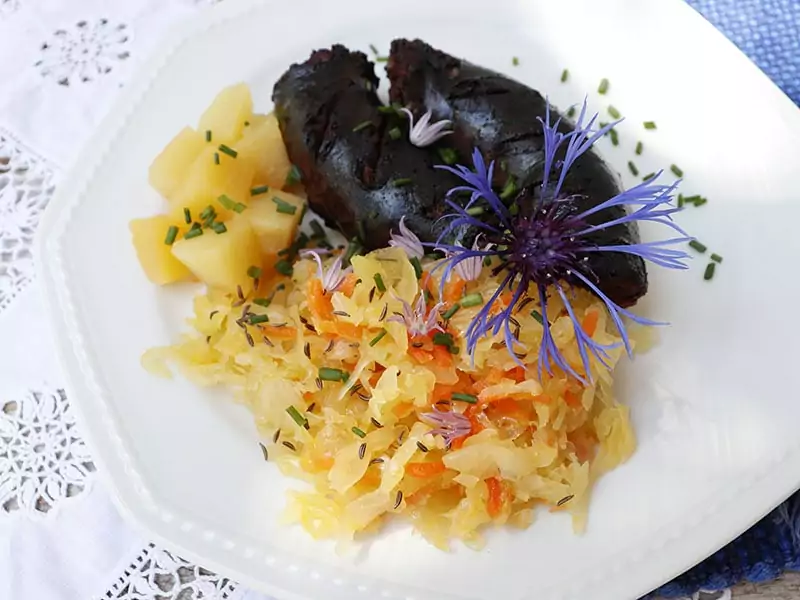
Verivorst is a traditional Estonian dish cooked with pig’s blood, barley groats, and other spices. Although blood sausage is an excellent appetizer for an everyday meal in Estonia, it is primarily sold and consumed during the winter months as it is a traditional Christmas dish.
Verikäkk (black pudding) can be considered a variation of Verivorst. However, perhaps due to its less appealing appearance, its popularity has slightly decreased in recent decades.
The name “blood sausage” might sound intimidating, but trust me, these sausages taste incredible once baked or fried. Serving it with a side of lingonberry jam or sour cream will enhance the dish’s flavor.
4. Aspic/Sült – Meat Jelly
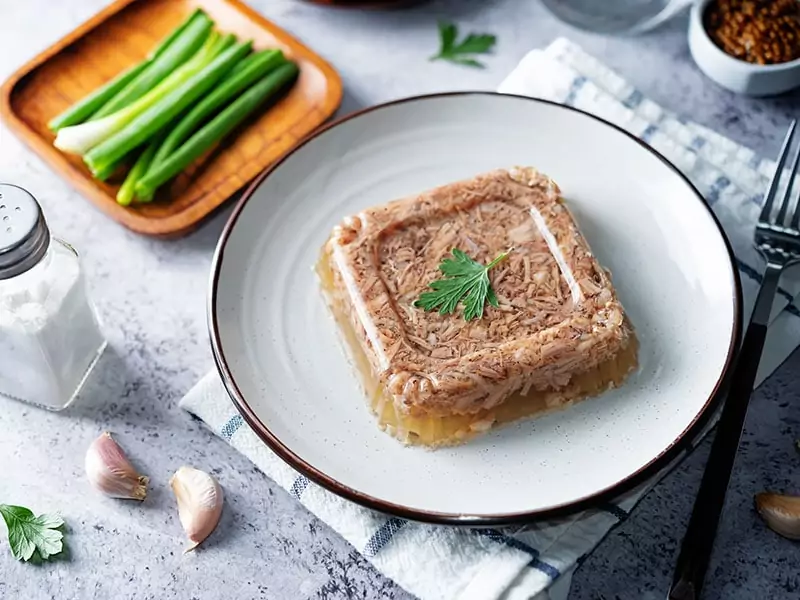
Aspic, also known as meat jelly, is a savory meat stock gelatin made from either meat, fish, vegetable, or eggs. Overall, Aspic is simply a gelatinous variant of traditional soup in its most basic form.
In Estonia, the most popular form of Aspic is pork jelly. This dish is produced from low-grade portions of pig meat with a lot of connective tissue, such as trotters. Nowadays, it is occasionally prepared in a more contemporary variant with lean meat and pig scraps.
Although the term “meat jelly” might not sound that appetizing to foreign visitors, it is still one of the most well-loved appetizers in this country. So be sure to check it out, you might like it!
5. Mulgikapsad – Sauerkraut with Pork And Barley
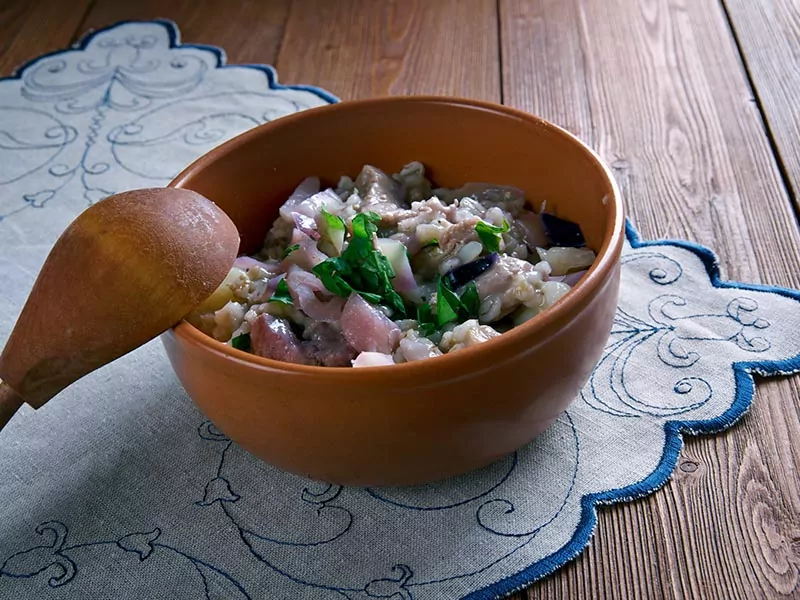
Mulgikapsad is a traditional Estonian sauerkraut, pork, and barley dish that can be served as a complete meal with boiled potatoes and fermented milk. Mulgikapsad, like all sauerkraut dishes, tastes better on the second day.
Barley has been grown in Estonia for almost 4,000 years, longer than other crops. Estonian villagers used to make this classic soup with barley groats every Thursday and Sunday, but pearl barley is also a great choice.
This tasty Estonian dinner dish requires a lot of effort and patience, but it will all be worth it in the end. You can also skip the pork and make it with only sauerkraut and barley if you’re vegan.
6. Rukkileib – Rye Bread
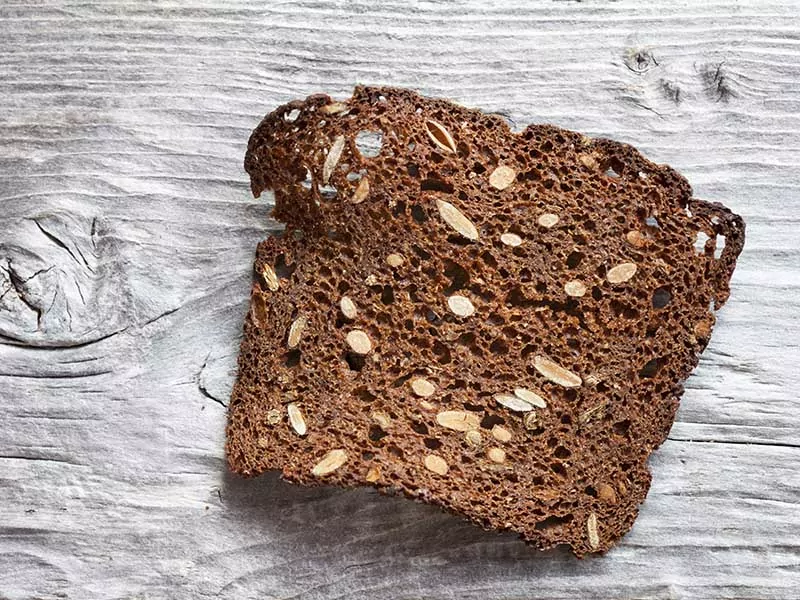
Black rye bread is served with practically every Estonian savory dish. Compared to white bread, rye flour bread is not only prettier in color, but it also contains a more robust flavor and higher amount of fiber.
Throughout the Middle Ages, Rukkileib has always been a staple in the cuisine of many European countries, such as Estonia, Iceland, Denmark, and Sweden. People said that this bread type first arrived in Britain around 500 AD.
There are countless dishes in Estonia that contain dark rye bread. For example, Kiluvõileib, the open-faced rye sandwich I mentioned in the last section.
7. Leivasupp – Bread Soup
Rye bread is an extremely popular bread variant in Estonia, but did you know you can make a soup out of it? Enter Leivasupp – a traditional rye bread soup!
This heartwarming Estonian dish is a thick, creamy, sweet bread soup with mashed rye, fruit juice, raisins, and cinnamon. This soup recipe is an excellent way to use up stale dark rye bread. Pairing it with cream, milk, and nuts will make this dish taste better too.
Despite its non-attractive appearance, Leivasupp is genuinely a mouth-watering delicacy. This warm or chilled bread soup is typically served as a dessert or a light afternoon snack. However, it’s also a well-loved main dish during school lunchtime in this country.
8. Rosolje – Potato and Beet Salad
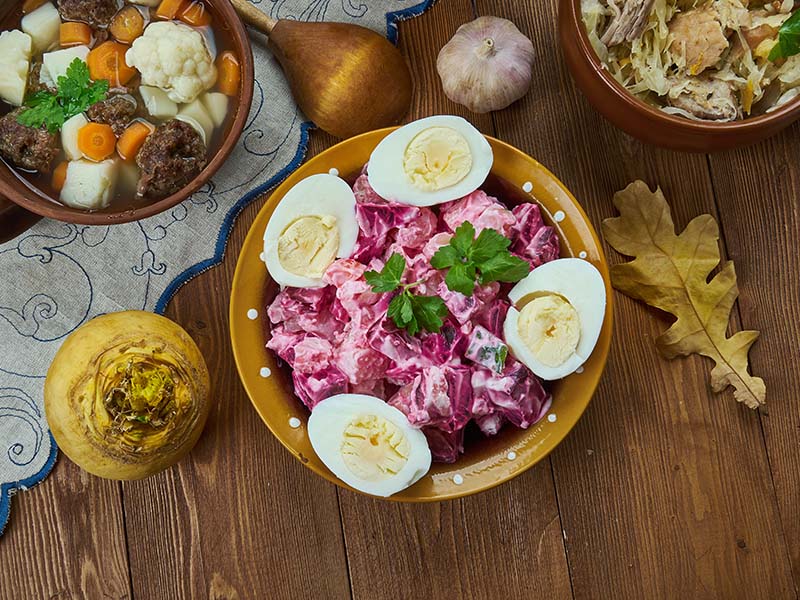
When it comes to Estonian salads, people will definitely think of Rosolje, a delightful fuchsia-colored salad made with bite-sized beet and potato chunks coated in a light, creamy sauce. Rosolje is often served chilled and goes well with meat or sausages.
Every family in Estonia has its own recipe for this dish, so the ingredients might vary from household to household. However, all of them must contain potatoes and beets.
This traditional salad can be customized by adding pickled herring, onions, hard-boiled eggs, or apples. The dressing is typically made with a mixture of mayonnaise and sour cream, with the addition of mustard and various fresh herbs.
9. Mulgipuder – Mashed Potatoes with Barley
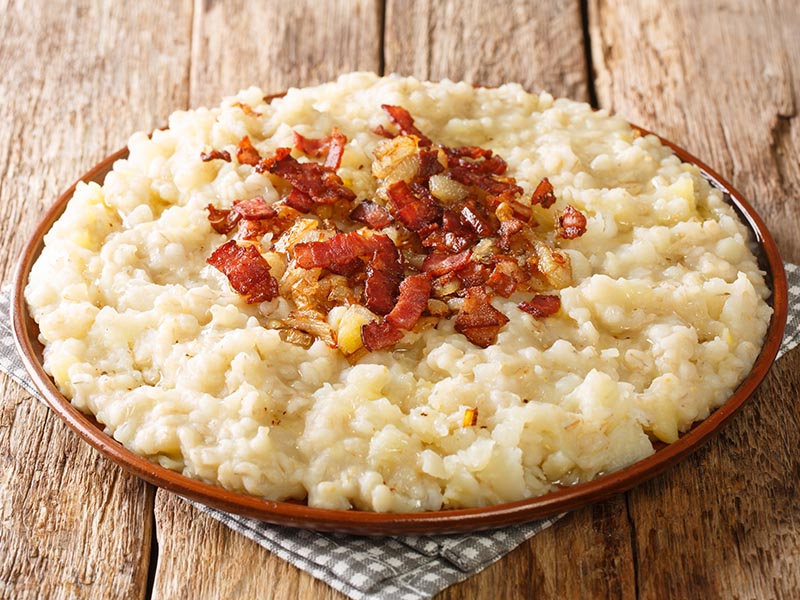
Mulgipuder is a hearty porridge made with mashed potatoes and barley, the perfect Estonian lunch recipe for vegans.
It’s commonly made with bacon and sautéed onions and served as a main course with rye bread and sour cream or as a side dish to go with other roasted meat meals.
The name of this dish means “Mulgi’s porridge”. Around the second part of the 19th century, residents in southern Estonia (the Mulgi) began making this comforting porridge.
This dish quickly became well-known across Estonia near the end of the century. Nowadays, it is still a comfort food staple that everyone can enjoy at home or a restaurant during numerous official events.
Funny story of this dish: In Mulgimaa, animals were considered more important than humans. So the locals used to give this porridge to them first, and the rest of the family could have the leftovers.
10. Kohuke – Curd Snack
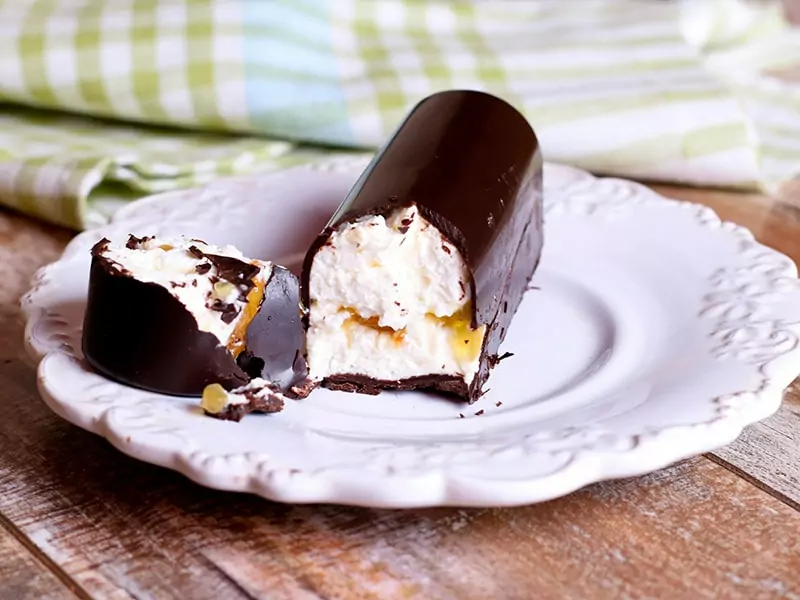
Kohuke is a popular sweet snack made from lightly pressed curd bars covered in chocolate. The treat is not only popular among Estonians, but it is also sought-after in other European countries.
Despite the unclear origin, it is still commonly believed that Kohuke was initially invented during the time of the Soviet Union. The delightful curd bar was soon a crowd favorite, but the hype eventually died out around the 1950s.
Now, this treat has regained its popularity as new flavors are being introduced, namely berry, chocolate, coconut, and kiwi. Kohuke still holds up to this day as a tasty, easy to consume treat that tastes somewhat like a cheesecake bar.
11. Vastlakukkel – Shrove Buns

Vastlakukkel is a traditional sweet roll filled with vanilla cream. Although this dessert originated from Sweden, it is considered an irreplaceable part of Estonia’s St. John’s Day celebration.
Also called Midsummer’s Day, St. John’s Day is one of the most celebrated holidays in Estonia and other Nordic countries. The celebration calls for bonfires, dancing, chanting, and of course, enjoying this delicious Vastlakukkel.
Vastlakukkel is also consumed in Sweden, Norway, Finland, and Iceland during the same holiday.
12. Mannavaht – Semolina Dessert Porridge
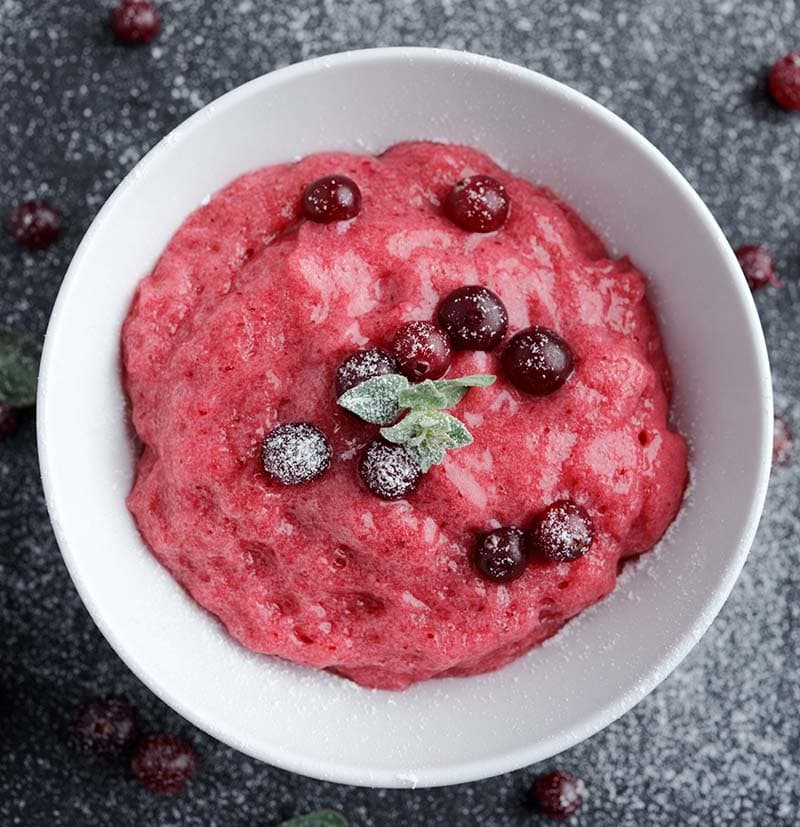
Vispipuuro is a signature Estonian dessert porridge made by cooking lingonberries with wheat semolina and sugar. Once cooked, the mixture is vigorously whipped and cooled down into a mousse-like dessert. It will then be topped with cream, sugar, and perhaps some fresh berries.
The dish is native to the people of Finland. However, it can also be found in several European countries.
Vispipuuro used to be a labor-intensive dish back in the day as flour needed to be made without the aid of machinery. Nowadays, the mixing doesn’t need to be done by hand, making it easier for the locals to prepare this dessert porridge at home.
Follow this recipe and learn how to make some Vispipuuro at home!
13. Kohupiimakreem – Cheese Curd Dessert with Berries
Looking at this list, you can quickly tell that the Estonians love their cheese curd, as this ingredient makes an appearance again in this dessert.
Kohupiimakreem is a homemade Estonian cold dessert made from whipped milk curd, vanilla, sugar, and whipping cream. It is served in small containers and topped with fresh berries.
Dairy products made up a considerable part of the Estonian diet today, but it was not until the 19th century that dairy production slowly gained momentum.
At the end of the 19th century and the early 20th century, the rise in dairying innovations helped farmers create more dairy products, including the Kohupiimakreem that everyone knows and loves today.
14. Marzipan – Traditional Sweet
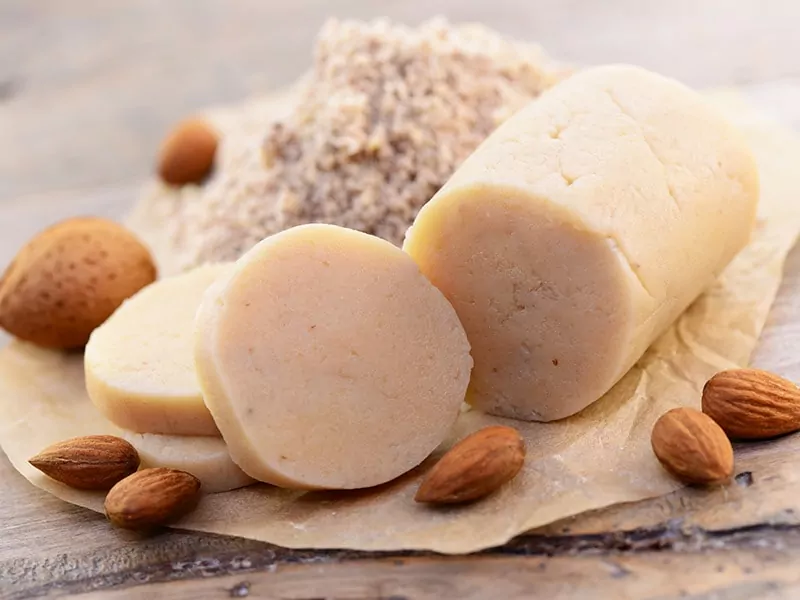
Marzipan was once sold by the Town Hall Pharmacy in the former Hanseatic city of Tallinn in 1695 as a medicine. But it is now enjoyed as a traditional sweet treat by the people of Estonia.
The treat is made from a compressed mixture of almonds and powdered sugar. It usually has a fun cylinder shape which will then be sliced into round bite-size pieces.
Although Marzipan may be overly sweet to some, it has been a well-known and well-loved dish to the Estonians for centuries. In fact, it is considered one of the oldest Estonian treats.
Homemade marzipan is ridiculously easy to make, take a look!
15. Kissel – Dessert Soup
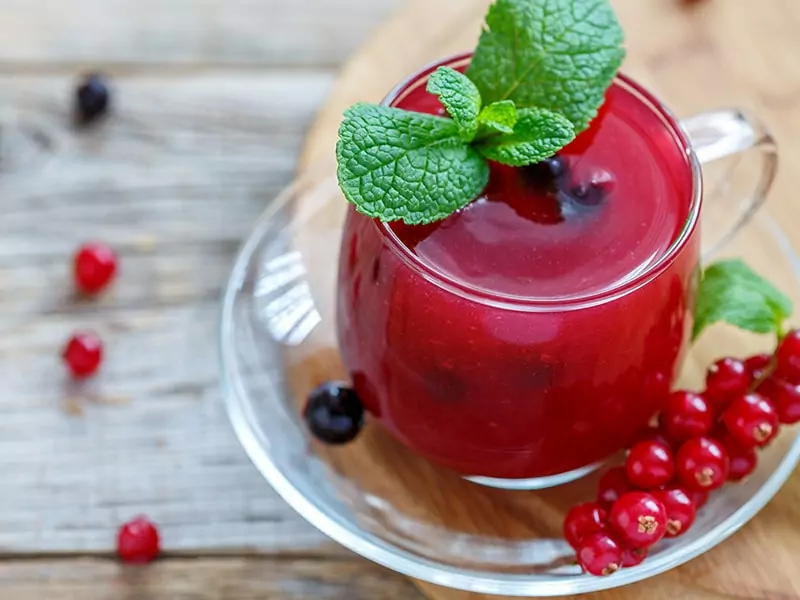
Kissel is a famous Estonian dessert that doubles as a drink when it’s at the right consistency. It is made from sweetened berry juice boiled down with cornstarch, potato starch, or arrowroot.
The alcoholic version of Kissel also calls for red wine. Sometimes, fresh or dried fruits can be added to the mix. Kissel is more likely to have a soupy consistency, served in a small cup, and usually eaten with a spoon.
Kissel originated in Russia in the 12th century despite its popularity in Estonia. The dish was then popularized in Poland, Finland, Ukraine, and certainly, Estonia.
16. Kama – Dessert with Milled Flour Mixture
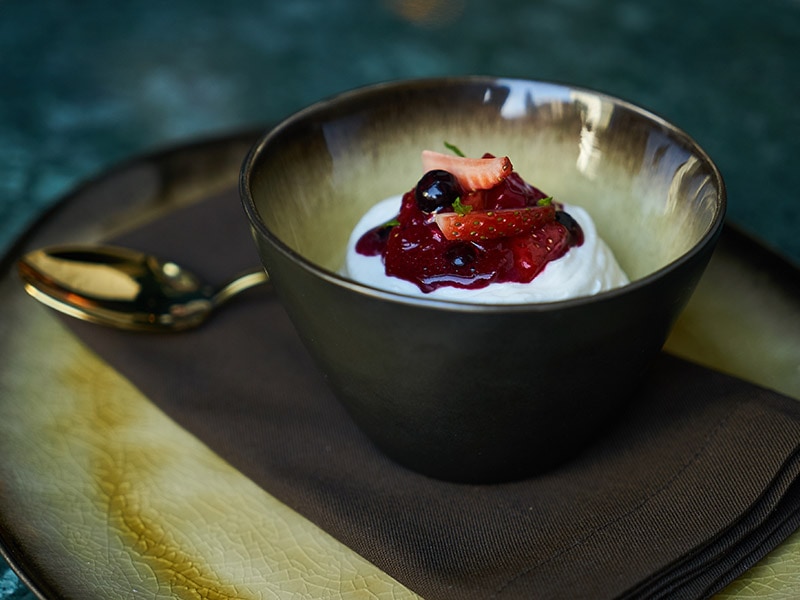
Kama is a classic Estonian dish made by grinding toasted oat, rye, barley, and peas into a fine powder. It is then enjoyed with buttermilk or other dairy products to create a creamy porridge that doesn’t require cooking.
In older times, Kama was the peasant way to use leftover milled grains. During the Soviet Union’s time, the chocolate shortage in the Baltic states led to Kama being made with blended evaporated milk, coffee, sugar, and cocoa powder.
This sweet treat version can somewhat quench people’s thirst for chocolate for a while. Kama is proof of how resourceful and resilient Estonian people are during hardships.
Nowadays, Kama is one of the most well-loved Estonian breakfast dishes out there. It can also be enjoyed as a drink or a filling road trip meal.
17. Kringle – Cinnamon Braid Bread
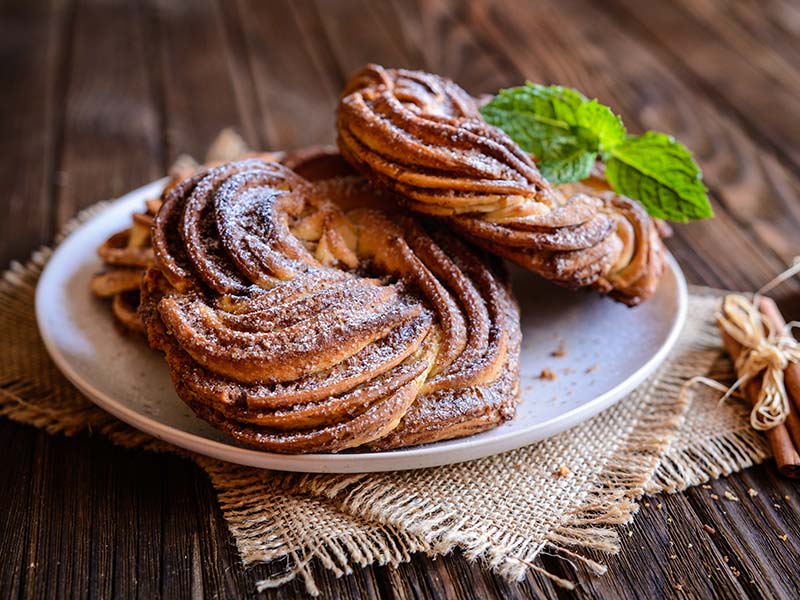
Kringle is a ring-shaped butter and cinnamon sweet braid bread. The treat is flaky, buttery, and extremely flavorful with cocoa powder, walnuts, or almonds fillings.
This tasty sweet bread has been widely consumed in Estonia during Christmas parties as part of the celebration ever since the 13th century.
At that time, Roman Catholic monks traveled the continent and introduced pretzels to Estonia and other Northern European countries. It was then evolved and spread throughout Scandinavia into different kinds of bread in all shapes, sizes, and flavors.
18. Kompott – Fruit Compote
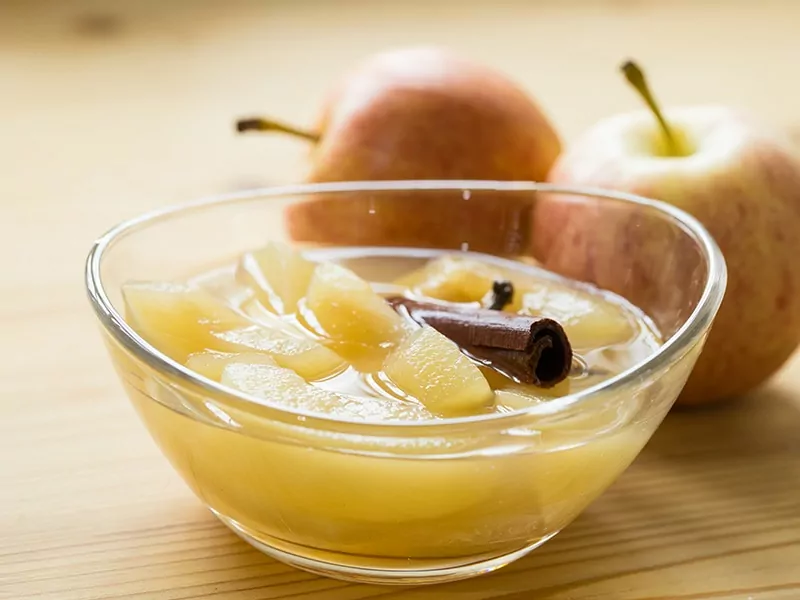
Here is another traditional Estonian dessert you must try at least once: Kompott, a fruit-based treat from medieval Europe.
The Estonians will cook big chunks of fruits in sugar syrup and spices to make this dish. Then, they also add vanilla, orange peel, cinnamon sticks, and other spices to give this dessert extra flavor.
The name Kompott comes from the Latin word compositus, which means “mixture”. Kompott was once used as a remedy to counter the negative effect of humidity on the human body. It was also served in major feasts in medieval England.
And There You Have It!
And that concludes my checklist of the most well-known and well-loved Estonian traditional foods. Be sure to write all of these dishes down when you have the chance to visit Estonia, don’t miss out on any of them.
Spoiled by natural resources and outstanding meteorological attributes, Estonia has a magnificent cuisine that can make many countries envy. So it would be a waste if you don’t take advantage of this opportunity and try out these delicious culinary staples.
Did you enjoy this article? If it’s a yes, feel free to leave a like and share it with your friends. And if you have any other questions about Estonian cuisine, just write a comment down below, and I’ll get back to you right away. Take care and goodbye, my dear readers!
